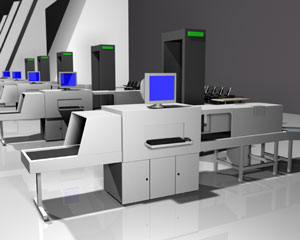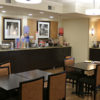W ith the advent of long lines experienced in recent months by passengers at airport security checkpoints within the United States, it was only a matter of time before someone wrote an article about the 13 ways to get through airport security faster — as in this article by Hilary White for POPSUGAR.
13 Ways to Get Through Airport Security Checkpoints Faster?
The advice imparted in the article is not bad; but much of it is considered logical common sense — and you probably already know about the advice given anyway. Still, my commentary will be posted with each tip.
Anyway, let us get started without further ado on the advice:
1. Have Your Ticket and Photo ID Out Before You Approach the Security Agent.
My identification — whether it is my driver’s license or my passport — is always in my front left pocket of the jeans or slacks which I wear whenever I travel; and I have easy access to my official identification at all times.
I also always keep my boarding pass with my identification until I am aboard the airplane, where I will place it into a side pocket in my bag which I carry aboard the airplane. This way, it does not crumple in my pocket; and on the rare occasion when I may need to retrieve it, it is still easily accessible.
Somehow, I wonder if the people who do not have their boarding pass and identification ready when they approach the security checkpoint at the airport are the same people who wait in line at the checkout lane at the supermarket and wait only until the total is finally announced by the cashier to first fish for a check to pay for the groceries — and the check must be filled out in its entirety, which means they must fish for a pen as well…
2. Wear Shoes That are Easy to Take On and Off.
The one thing I do like about airport security checkpoints outside of the United States is that I do not have to remove my shoes at most of them.
When I do have to remove my shoes, I do it just as I approach the checkpoint and there are still several people ahead of me. I then put on booties so that my feet do not have to touch the floor, as I do not want what is on the floor to be in my shoes when I put them back on my feet. By the time the booties are on, I am usually next in line to get through the scanning device; so I never hold up the line.
Once I have passed through the airport security checkpoint, a few minutes is all I need to remove the booties from my feet and put my shoes back on. No fuss; no muss, as they say — whoever they are.
Overall, this is a good — if not obvious — bit of advice: wear shoes which are easy to remove and put back on your feet.
By the way, shoes are supposed to go on the belt itself. They are not to be placed in a bin.
3. Examine the Lines Before You Choose Yours.
“Avoid lines with large groups who are together, extra supplies (instruments, child carriers, sports equipment), and travelers with large carry-on bags and loads of extra items like jackets, toiletry bags, laptops, etc.” advises White. “People with extra items or those who aren’t very savvy about the security process will slow you down. Try getting in a line with a solo traveler or someone who seems to know the process pretty well already.”
Perhaps; but this is similar to choosing the fastest lane in either the supermarket when checking out or on a highway in heavy traffic — and believe me, the lines are not always as predictable as you might think.
4. Pack Like a Minimalist.
This is advice which I have given in numerous articles in the past; and this article is no exception.
5. Empty Your Pockets.
I usually put whatever is in my pockets — aside from my official identification and boarding pass — in that aforementioned convenient side pocket in the bag I carry aboard the airplane with me prior to even entering the line at the airport security checkpoint.
Once I successfully pass through, I reach into that side pocket and place all of my items back in my pockets. This is so simple and takes a negligible amount of time.
6. Get Rid of Your Drink.
“I refuse to buy a million different water bottles when I fly, because it can seriously add up”, according to White. “So chug your water or whatever you’re drinking while you’re in line waiting to go through security, and finish it up before it’s your turn to send your things through. That way you can refill it when you get to your gate. Just don’t forget you’ve got a drink on you, otherwise you’ll have to toss a full bottle if it ends up going through the scanner.”
The only thing I have to add to that statement is that I never have a drink with me for which I paid. If I have anything with me to drink, it is usually a bottle of water I received free of charge from either an airline, hotel or other source. Although I usually do finish it by the time I am at the airport security checkpoint, on the rare occurrence that I indeed have a full bottle of water, it is no major loss to surrender it, as I did not pay for it.
7. Get Your Laptop Out Before It’s Your Turn to Load the Conveyor Belt.
“While you’re in line, start prepping your belongings to go through the security check”, advises White. “I always organize everything in groups, keeping my laptop separate from everything else, because large electronic devices must be placed in a different container than miscellaneous items like shoes, belts, wallets, etc.”
That is good advice; but if I do carry a laptop computer with me, it is always easily accessible to me for more reasons than to take it out at the airport security checkpoint — so it is easy for me to remove it from its bag prior to being scanned.
8. Don’t Carry On Items You Don’t Absolutely Need For the Flight.
“If you’re already checking a bag anyway, then try to pack your toiletries, liquids, electronics, and any other cumbersome items in your checked bag instead.” I rarely check baggage; so this bit of advice does not particularly pertain to me — but I must disagree with packing items such as electronics or certain toiletries in a checked bag. In case the bag gets lost or stolen, you will lose your expensive electronic devices; and you will first have to purchase new toiletries to replace the ones in the missing bag. Always carry your necessities and expensive items with you if at all possible.
White also advises that “If you don’t absolutely need a belt to hold up your pants, skip wearing one so you don’t have to deal with taking it on and off. If you don’t really need your hand lotion until you get to your destination, skip packing it in your carry-on — and pack only the important travel stuff instead.” That is good advice. When I am not wearing a belt, I roll it up tightly and place it inside one of my shoes in my bag, if I am carrying an extra pair of shoes.
It feels weird taking a belt off in public. I feel like I am undressing whenever I do that. The funny thing is that if I did that before Tuesday, September 11, 2001, people would probably look at me strangely — and they do that anyway…
9. Be Polite to Airport Employees.
Correction: be polite to everyone. Enough said.
10. Choose Your Flight Times With Care.
This is true. While arriving on time at an airport for a flight scheduled to depart at 6:00 in the morning on a Saturday is not exactly a delightful experience — think alarm clock awakening you at 3:00 in the morning — breezing through the airport security checkpoint is definitely a benefit…
…as well as knowing there will be no traffic getting to the airport; and a possible rare upgrade opportunity prior to boarding the airplane.
11. Know Where the Less-Crowded Security Checkpoint Is.
“Many travelers crowd around the checkpoint closest to where they checked in for their flights, but oftentimes, there are other checkpoints that may be a little bit of a longer walk, but they may have shorter lines, thus saving you time and trouble in the long run.”
I have nothing to add to this advice by Hilary White; but just be advised that not all airports have more than one security checkpoint — and even when there is another security checkpoint, all you need is one person to hold up the line for not following any of the aforementioned ten pieces of advice.
12. Upgrade Your Flight.
Yes, getting an upgrade — whether paid or complimentary — can get you to bypass the regular line at an airport security checkpoint; but that does not automatically mean that the alternative line is faster, shorter or better. I have seen lines reserved for passengers with elite level status which were significantly longer and had more of a wait time than the regular lines — especially at the “hub” airports of airlines — as they usually have fewer staff members manning those lines.
The same can be true at lines at the ticketing counter of an airline.
13. Get TSA PreCheck.
Paying for this program does not automatically assure you expedited service at every airport; nor does it always mean that the line will be faster, shorter or better. In fact, not only could this line be closed at the airport which you plan on using depending on the time of day; but not all airports even have a special line available for members of the TSA Pre✓ Program.
I am not going to comment much on this with the exception that I have ensured that my thoughts were known in this article which I wrote earlier this month; and I know that many readers of The Gate disagree with me.
Summary
As I already said, much of the advice imparted in the article is considered logical common sense; and you probably already know about most — if not all — of the advice given anyway.
Do you have any additional tips and tricks which you could add to assist fellow readers of The Gate to pass though airport security checkpoints that much faster? If so, please post them in the Comments section below.
Thank you in advance.
Source: Transportation Security Administration.

